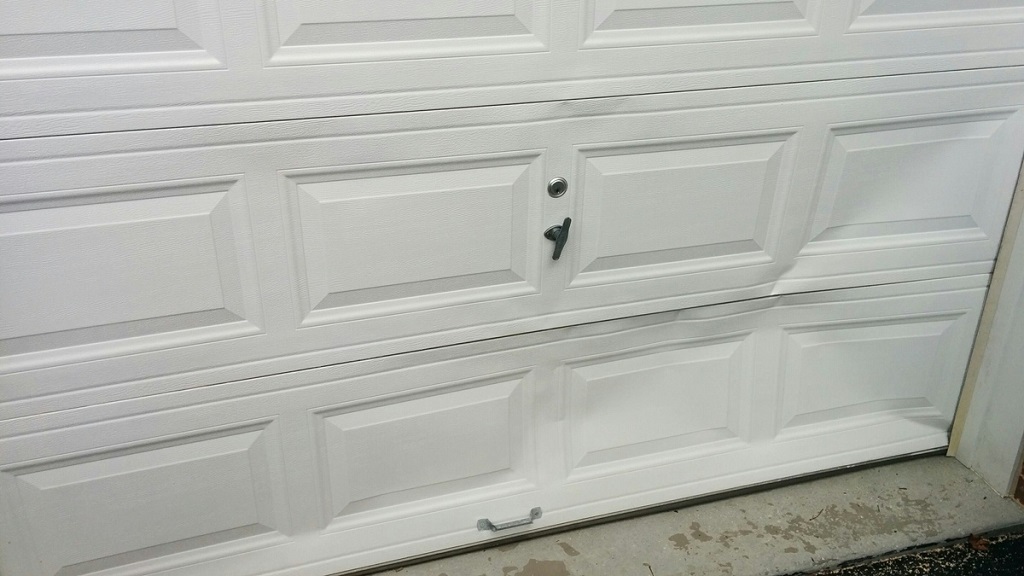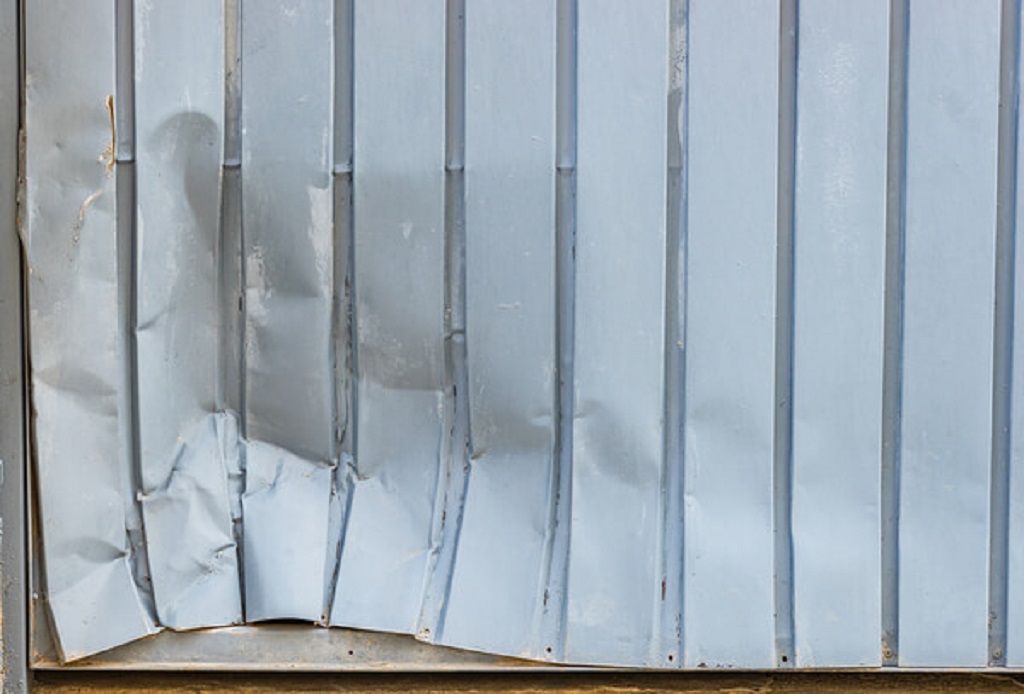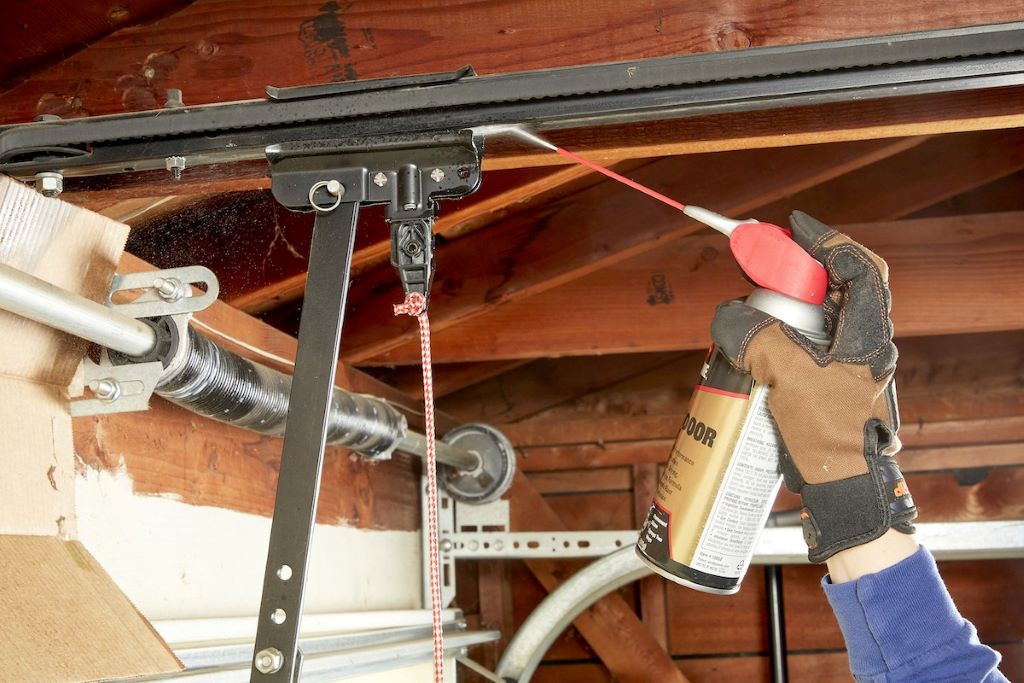A dent in your garage door can be an eyesore and make your home look unkempt. While some dents are minor and purely cosmetic, larger dents can prevent your garage door from opening and closing correctly. Fixing a garage door dent is usually a straightforward DIY project you can tackle in the afternoon. Your garage door will look new again with some essential tools and materials. Let’s discover how to fix dent in garage door.
Assessing the Damage

The first step is to assess the dent and determine what is needed to fix it. Here are some things to look for:
- Size of the dent – Is it a minor shallow or deeper crease? Larger dents will require more work to pop out.
- Location on the panel – Dents in the center of a panel are more accessible to fix than ones near the edges or seams.
- Effect on operation – Does the dent properly interfere with the door opening and closing? If so, it will need to be fixed.
- Paint damage – Is the paint cracked or chipped around the dent? This may require touch-up painting after dent removal.
- Accessibility – Can you safely reach the dented area? Using ladders or scaffolding may be needed for high or awkward spots.
Once you’ve evaluated the dent, you can determine the best repair method.
Gather the Right Tools and Materials
Fixing a garage door dent is often a simple “pop out” process. However, having the proper tools makes the job much easier. Here are the essential items you’ll need:
Tools
- A rubber mallet – The impact from a rubber mallet can help pop out minor dents from the inside.
- Hammer and block of wood – For deeper dents, placing a wood block against the outside and hammering can flatten it out.
- Putty knife – A flexible knife can apply pressure around a dent to work it out slowly.
- Paint scraper – Useful for removing loose paint or chipped areas around the damaged section.
- Orbital sander – For sanding and smoothing repairs if filler is needed.
- Drill – This may be needed to add extra leverage by drilling holes for wood stakes.
- Ladder – For safely accessing high or awkward areas on tall garage doors.
Materials
- WD-40 – Lubricates the dented area and sheet metal to make dent removal easier.
- Body filler or wood putty – For filling any holes or gaps after popping out the dent.
- Sandpaper – For smoothing filler and prepping for touch-up painting.
- Paint – Match the garage door color for painting over repairs.
- Rags – For cleaning the area before and after the dent removal process.
These supplies will make DIY garage door dent repair much more straightforward.
The Dent Repair Process Step-by-Step
Once you have assessed the damage and gathered the necessary tools, you’re ready to start fixing that unsightly garage door dent:
1. Clean and Lubricate the Area
Use a rag to remove dirt or debris around the dented section. Then, spray or brush WD-40 onto the dent and surrounding area. This lubricates the metal and makes it easier for the dent to pop out.
2. Work from the Inside First
Start your dent removal from the inside of the garage if possible. Take a rubber mallet and gently hit around the edges of the dent, working slowly inward. The WD-40 and hammer impacts will gradually push the metal back into shape.
3. Use a Wood Block and Hammer for Deeper Dents
If the dent is more profound, you’ll need more force. Place a wood block or piece of plywood on the outside of the dent. Use a regular hammer to hit the wood firmly, driving the dent outward. Check frequently to see if the dent is raised.
4. Utilize a Putty Knife
For even more control, a flexible putty knife is ideal for pushing out dents from the inside. Place the thin end under the dent and slowly twist and apply pressure until it pops up. Take your time with this method.
5. Drill Relief Holes if Needed
Extremely deep or creased dents may require drilling a small relief hole through the panel. This gives you access to push against the backside. Place a wood stake or screwdriver through the hole as a lever to lever out the dent.
6. Fill Any Gaps or Holes
Once the dent is smoothed, fill gaps or drill holes with body filler, Bondo, or wood putty. Allow this to dry, then sand flush. You want an even surface for painting.
7. Sand and Prep the Area
Use fine-grit sandpaper to blend and smooth the filler area. Then, clean and lightly scuff the damaged section to prep for touch-up painting.
8. Paint the Repaired Section
Apply primer and paint to the sanded repair area using a small foam brush. Try to feather out the fresh paint to make the transition smooth.
9. Allow Paint to Dry
Give the paint at least 24 hours to fully cure before operating the garage door. The section will now look as good as new!
This straightforward process lets you easily remove minor or significant dents from your garage door using standard household tools. Just take your time and work slowly.
Tips for Preventing Future Dents

While garage door dents are usually accidental, you can prevent many by following these valuable tips:
- Install garage door bumpers – The rubber pads absorb impacts along the opening to prevent dents.
- Be aware when opening and closing – Carefully watch the door travel to avoid objects getting trapped.
- Keep area clear – Do not store or place items near the door opening that could get hit.
- Check weatherstripping – Replace worn seals to prevent the door sections from blowing in the wind.
- Use auto-reverse safety features – Make sure garage door openers have proper force and reversal adjustment.
- Consider reinforcing the paneling – Adding an inner stiffening layer can make the door more dent-resistant.
- Choose steel or aluminum over wood – Steel garage doors are more denting-resistant than wood panels.
With proper precautions, you can minimize the chances of your garage door getting dented or damaged from regular use over the years.
FAQs
How much does it cost to fix a garage door dent?
For DIY repairs, costs are minimal – usually around $20-$50, depending on the tools needed. Professional repair costs range from $75 for minor dents to $400 for large and complex dents.
Should I replace the panel if the dent is too significant?
In most cases, dent removal and touch-up painting are sufficient. However, replacing the entire damaged section may be more accessible and give better results for deep or wide dents covering a large area.
Is using a heat gun or dry ice to remove dents okay?
Extreme heat or cold is not recommended as it can damage the sheet metal or paint on the door. Stick to mechanical dent removal methods only.
What is the easiest dent to fix on a garage door?
Dents in the center of a panel, away from braces or seams, are often the simplest to pop out with hand tools and basic leverage techniques.
What should I do if the dent is near a sharp crease or edge?
To avoid cracking the paint or sharp edges catching, it is necessary to work out dents near a seam or crease slowly and carefully. Supporting the area around the dent will help.
How long does garage door dent repair usually take?
The project can take 2-4 hours on average, depending on the dent size and methods required. Allow additional time for filler, sanding, and painting work needed after removal.
Conclusion
Fixing dents and dings on your garage door can seem daunting at first. But with this step-by-step guide, the right tools, and patience, you can disappear those unsightly dents. To remedy a dented garage door, follow these steps: Carefully work the dent from the inside first, then employ wood blocks and hammers or putty knives to lever them out smoothly. Afterward, fill any gaps, sand the surface, and apply a fresh coat of paint, thereby saving yourself the expense of replacing the entire panel.. Just be cautious when working from heights and take it slow. You’ll get better at popping out garage door dents properly with practice. Your repair will be hardly noticeable and prevent the eyesore of damaged panels every time you pull into the driveway.





